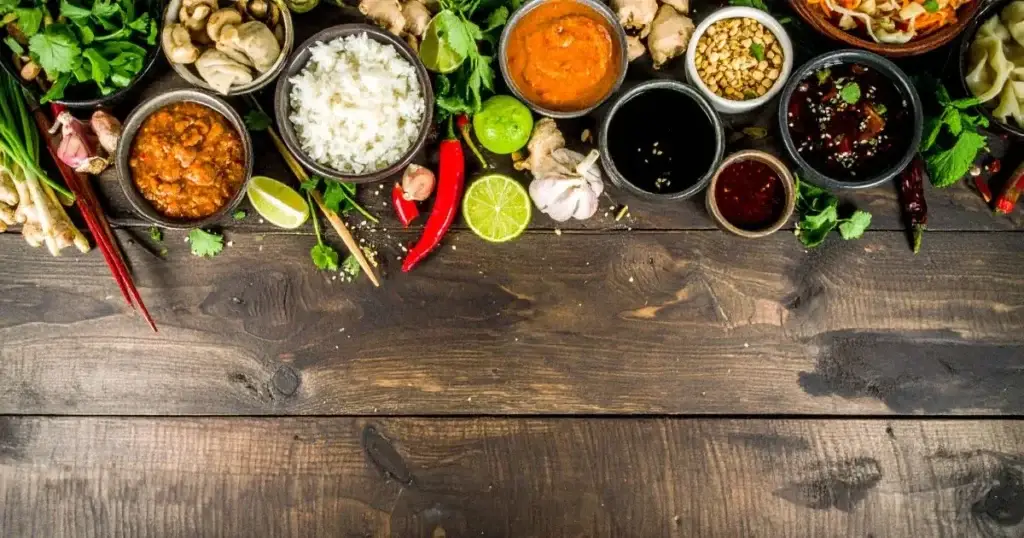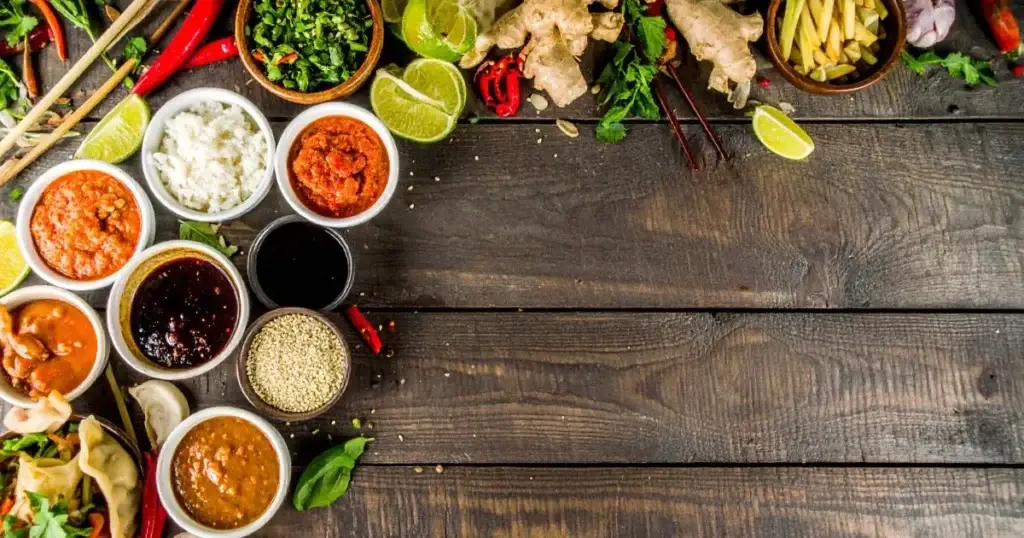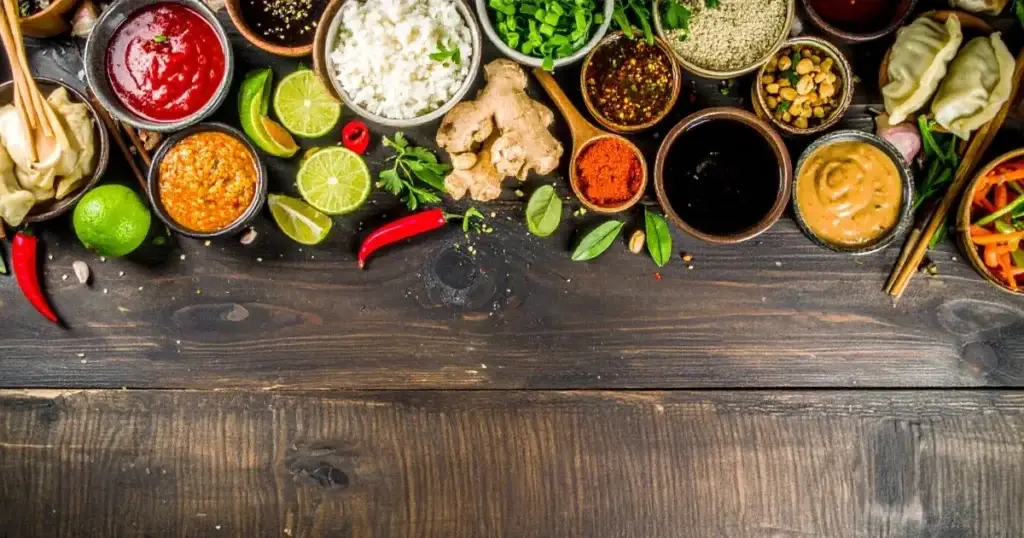Table of Contents
The Ultimate Guide to Asian Food Sauces: The Best Homemade Sauces for Every Meal
There’s a certain magic that happens when you whip up a homemade Asian sauce. The aroma fills your kitchen, and suddenly, you’re transported to bustling street markets and cozy family dinners. Asian food sauces are not just condiments; they are the heart and soul of your meals, adding depth, flavor, and a touch of authenticity. Embarking on the adventure of crafting these sauces, whether you’re just starting out or have years behind the stove, can truly transform everyday meals and brighten gatherings.
In this guide, you’ll discover the best homemade Asian food sauces that you can easily prepare at home. You’ll learn about essential ingredients, step-by-step recipes, and tips for using these sauces in your everyday meals. Let’s dive in!
Exploring the Unique Value of Home-Prepared Asian Sauces
When it comes to flavor, nothing beats homemade sauces. Here’s why you should consider making your own Asian food sauces:
- Healthier Options: Homemade sauces allow you to control the ingredients, making them healthier than store-bought versions that often contain preservatives and excessive sodium.
- Customization: You can tailor the flavors to suit your taste preferences or dietary needs, whether you’re looking for gluten-free, vegan, or low-sodium options.
- Cost-Effective: Making sauces at home is often more economical than purchasing pre-made ones, especially when you can create larger batches.
- Authenticity: Homemade sauces bring a level of authenticity to your dishes that store-bought options simply can’t match.
Data to Consider
Research shows that many commercial sauces contain high levels of sodium and preservatives. For instance, a study from Harvard Health indicates that some soy sauces can contain up to 1,000 mg of sodium per tablespoon. Making sauces from scratch lets you enjoy cleaner, brighter flavors while lowering how much salt ends up in your diet.

Essential Ingredients for Authentic Asian Food Sauces
Before you start making your sauces, it’s important to stock your pantry with some essential ingredients. Here’s a list of must-have items that will serve as the foundation for many Asian food sauces:
- Soy Sauce: The backbone of many Asian sauces, available in light, dark, and tamari varieties.
- Rice Vinegar: Adds a mild tanginess that balances flavors.
- Sesame Oil: Brings a distinct toasted nuttiness, best used to finish dishes with a flavorful touch.
- Oyster Sauce: Adds a rich, savory depth to stir-fries and marinades.
- Fish Sauce: A staple in Southeast Asian cuisine, it brings umami and saltiness.
- Chili Paste/Sauce: For those who love heat, this ingredient is essential.
- Garlic, Ginger, and Scallions: Fresh aromatics that enhance the flavor profile.
- Sugar or Honey: Balances out savory and spicy flavors.
Common Ingredients and Their Uses
| Ingredient | Flavor Profile | Common Uses |
|---|---|---|
| Soy Sauce | Salty, umami | Marinades, stir-fries |
| Rice Vinegar | Tangy, mild | Dressings, dipping sauces |
| Sesame Oil | Nutty, aromatic | Finishing oil, dressings |
| Oyster Sauce | Savory, sweet | Stir-fries, glazes |
| Fish Sauce | Salty, pungent | Dips, curries, marinades |
| Chili Paste | Spicy, bold | Sauces, soups, stir-fries |
The Best Homemade Asian Food Sauces for Every Meal
Now that you have your ingredients ready, let’s explore some of the best homemade Asian food sauces you can make. Each recipe is simple, quick, and packed with flavor.
Classic Soy-Based Sauces
Simple Soy Dipping Sauce
This versatile sauce is perfect for dumplings, sushi, and spring rolls.
Ingredients:
- 1/2 cup soy sauce
- 2 tablespoons rice vinegar
- 1 tablespoon sesame oil
- 1 clove garlic, minced
- 1 scallion, finely chopped
Instructions:
- Mix together soy sauce, rice vinegar, and a dash of sesame oil in a petite bowl until well incorporated.
- Stir in minced garlic and chopped scallion.
- Use this mix immediately, or let it chill in your fridge for up to seven days.
Teriyaki Sauce
A sweet and savory glaze that’s perfect for grilling or stir-frying.
Ingredients:
- 1/2 cup soy sauce
- 1/4 cup mirin
- 1/4 cup brown sugar
- 1 clove garlic, minced
- 1 teaspoon grated ginger
Instructions:
- Pour soy sauce, mirin, and brown sugar into a saucepan and blend.
- Add minced garlic and grated ginger.
- Gently heat on medium, stirring until you notice all the sugar has vanished into the liquid.
- Cook for 5-7 minutes until slightly thickened. Cool before using.

Ponzu Sauce
A citrusy sauce that’s great for salads and seafood.
Ingredients:
- 1/2 cup soy sauce
- 1/4 cup fresh citrus juice (lime or lemon)
- 2 tablespoons rice vinegar
- 1 tablespoon bonito flakes (optional)
Instructions:
- In a separate bowl, combine soy sauce with a splash of citrus and a bit of rice vinegar.
- If using, add bonito flakes and let sit for 10 minutes for flavor infusion.
- Strain before serving.
Spicy Asian Sauces to Ignite Your Taste Buds
Homemade Sriracha
This spicy sauce is perfect for adding a kick to noodles, eggs, and sandwiches.
Ingredients:
- 1 cup red chili peppers, chopped
- 4 cloves garlic, minced
- 1/4 cup sugar
- 1/4 cup vinegar
- 1 teaspoon salt
Instructions:
- Toss everything into a food processor and blend to a silky mixture.
- Shift this mixture into a pot and let it cook gently for around 10 to 15 minutes.
- Once cooled down, place the sauce in a tightly sealed jar and refrigerate.
Chili Garlic Sauce
A striking sauce like this excels when paired with stir-fried meals or used as a flavorful dip.
Ingredients:
- 1/2 cup chili paste
- 4 cloves garlic, minced
- 2 tablespoons vinegar
- 1 tablespoon sugar
Instructions:
- Mix chili paste, minced garlic, vinegar, and a handful of sugar in a bowl.
- Adjust sugar to taste. Place in the fridge, where it will stay good for roughly two weeks.

Gochujang Sauce
This Korean staple adds a sweet and spicy flavor to dishes.
Ingredients:
- 1/2 cup gochujang (Korean chili paste)
- 2 tablespoons soy sauce
- 1 tablespoon honey
- 1 tablespoon sesame oil
Instructions:
- Put all the ingredients together in a mixing bowl and stir thoroughly.
- You can now use your sauce or tuck it away in the fridge for up to a month.
Creamy and Nutty Asian Sauces
Peanut Sauce
This creamy sauce is perfect for satay, salads, and noodles.
Ingredients:
- 1/2 cup peanut butter
- 1/4 cup soy sauce
- 2 tablespoons lime juice
- 1 clove garlic, minced
- Water to thin
Instructions:
- Place peanut butter, soy sauce, freshly squeezed lime juice, and finely chopped garlic into a bowl, then stir briskly until the mixture turns smooth and silky.
- Pour in water little by little, mixing until your desired thickness appears.
- Serve with grilled meats or as a salad dressing.
Tahini Miso Dressing
A unique dressing that’s great for salads and grain bowls.
Ingredients:
- 1/4 cup tahini
- 2 tablespoons miso paste
- 2 tablespoons rice vinegar
- 1 tablespoon sesame oil
- Water to thin
Instructions:
- Mix together tahini, miso, rice vinegar, and sesame oil in a bowl to create a rich, umami-packed sauce.
- Add just enough water—slowly—to create a consistency you like.
- Drizzle over salads or grain bowls.
Sweet and Tangy Asian Sauces
Sweet Chili Sauce
Try this sauce as a dip for fresh rolls or a topping for grilled meat plates.
Ingredients:
- 1/2 cup sugar
- 1/2 cup vinegar
- 1 tablespoon chili flakes
- 1 clove garlic, minced
Instructions:
- In a saucepan, cook sugar, vinegar, chili flakes, and finely chopped garlic, stirring until everything melds together.
- Once your mixture starts to bubble, lower the heat and let it gently cook for another 10 minutes.
- Cool and store in the refrigerator.
Hoisin Sauce
A sweet and savory sauce that’s great for stir-fries and wraps.
Ingredients:
- 1/2 cup soy sauce
- 1/4 cup peanut butter
- 2 tablespoons honey
- 1 tablespoon rice vinegar
- 1 teaspoon garlic powder
Instructions:
- Stir all components together in a bowl until no lumps remain.
- Dip in right away or let it chill in the fridge—good for up to 14 days.
How to Store and Use Your Homemade Asian Food Sauces
Once you’ve made your delicious sauces, it’s important to store them properly to maintain their freshness and flavor. Here are some tips:
- Storage: Store your sauces in airtight glass jars to lock in their flavor and keep them fresh. This helps preserve their flavors and prevents contamination.
- Refrigeration: Most homemade sauces survive well in refrigeration for a week or two, though chili oil varieties can often stick around much longer.
- Freezing: If you make large batches, consider freezing sauces in ice cube trays. Once frozen, transfer them to a zip-top bag for easy portioning.
- Creative Uses: Don’t let leftover sauces go to waste! Use them as marinades, salad dressings, or dipping sauces to enhance your meals.
Storage Tips
- Label jars with the date and sauce name to keep track of freshness.
- Use glass containers for longer-lasting flavors and to avoid chemical leaching from plastic.
- Freeze in small portions for convenience, allowing you to use just what you need.
Frequently Asked Questions About Asian Food Sauces
What are the healthiest Asian food sauces to make at home?
When making sauces at home, focus on low-sodium soy sauce, fresh ingredients, and natural sweeteners like honey or maple syrup. Hold back on the sugar and artificial bits to ensure your homemade sauces stay wholesome.
Can I make Asian food sauces gluten-free or vegan?
Absolutely! Swap out soy sauce for tamari if you need a gluten-free option, or use coconut aminos as a substitute; for vegan recipes, replace fish sauce with mushroom soy sauce or extra soy sauce.
How long do homemade Asian food sauces last?
Typically, these homemade creations will last up to 2 weeks when kept cold, but vinegary sauces like sweet chili often last even longer.
What’s the best way to use Asian food sauces in everyday meals?
You can use these sauces as marinades for meats, dressings for salads, or dipping sauces for appetizers. They can also be mixed into stir-fries or drizzled over rice and noodles for added flavor.
Conclusion: Bring the Flavors of Asia to Your Kitchen
Now that you have the knowledge and recipes to create your own homemade Asian food sauces, it’s time to get cooking! Flavorful sauces like these not only uplift your meals, they open doors for creative cooking experiments. So, gather your ingredients, try out these recipes, and enjoy the delicious journey of homemade Asian cuisine.
Don’t forget to share your culinary creations with friends and family, and encourage them to explore the world of homemade sauces. Happy cooking!
By following this guide, you’ll not only impress your taste buds but also elevate your cooking skills. Dive into the world of Asian food sauces and transform your meals into unforgettable experiences!

